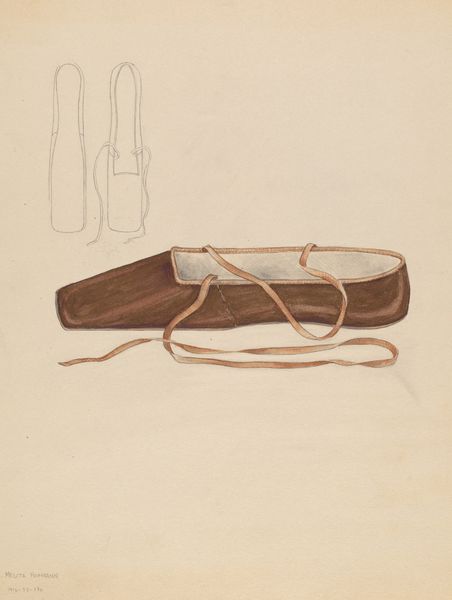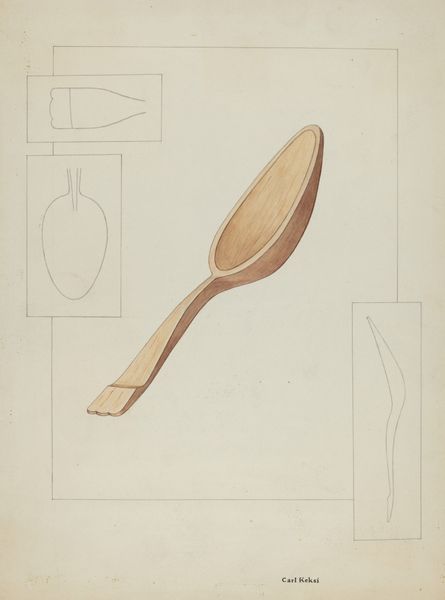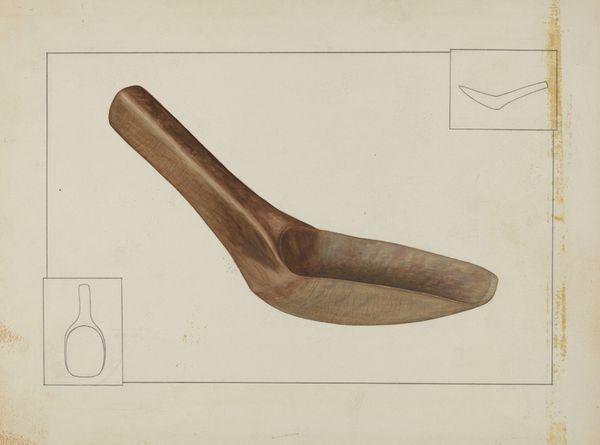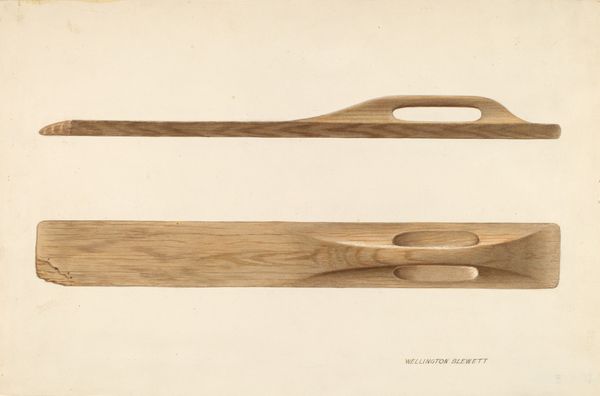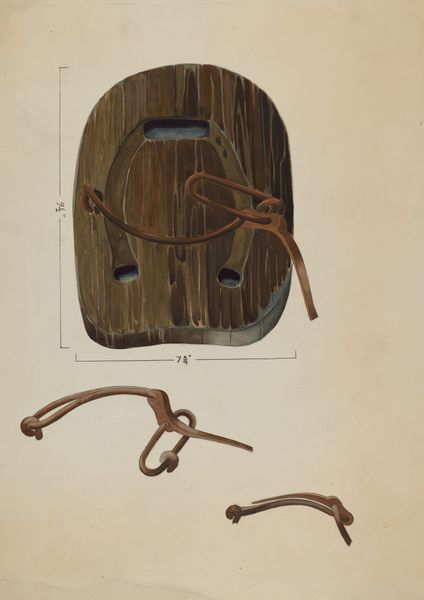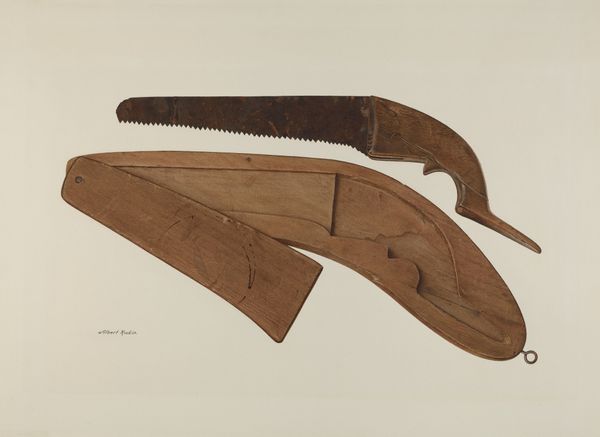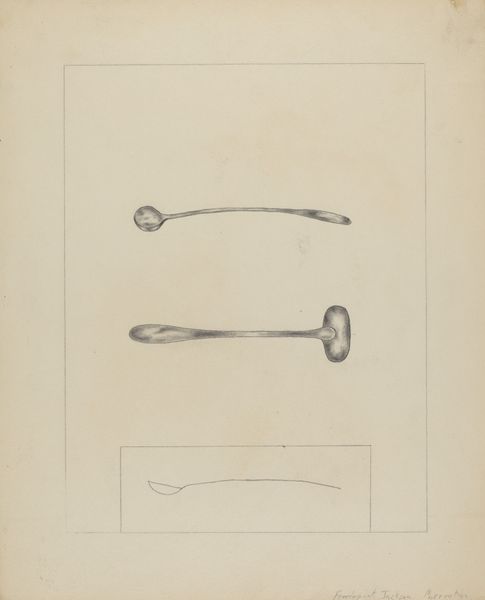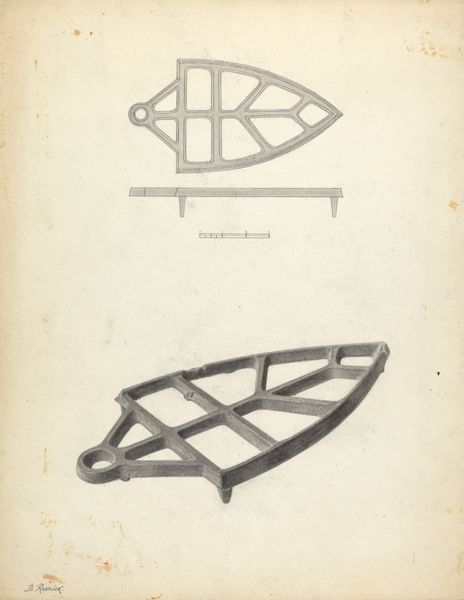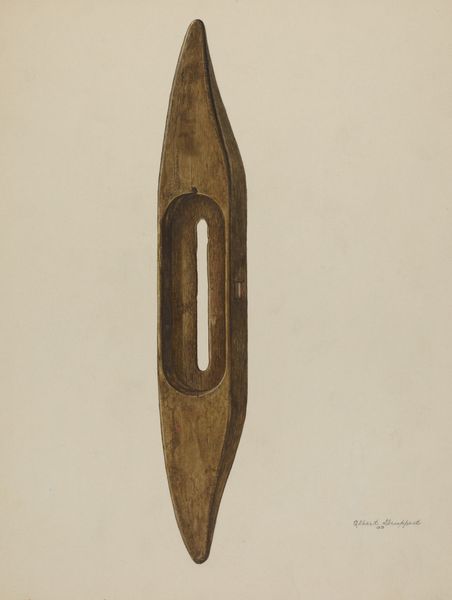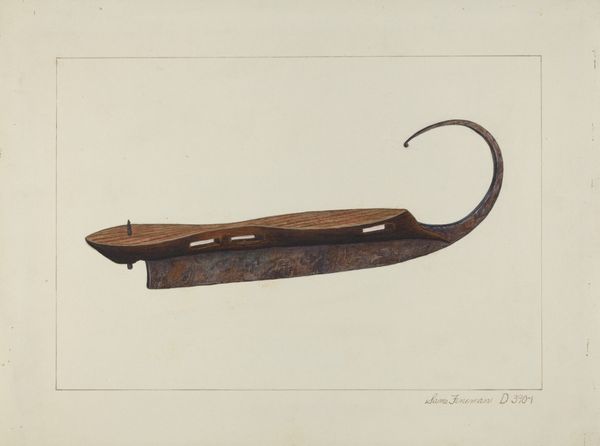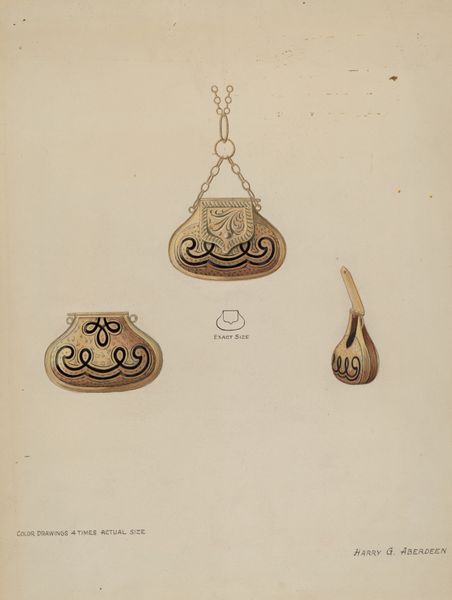
drawing, paper, watercolor
#
drawing
#
paper
#
watercolor
#
academic-art
#
watercolor
Dimensions: overall: 31.8 x 24.7 cm (12 1/2 x 9 3/4 in.) Original IAD Object: 12" long; 2" wide; 4 1/2" high
Copyright: National Gallery of Art: CC0 1.0
Curator: Immediately I'm drawn to the almost meditative quality of this composition. The skates seem to float on the paper, removed from any context other than their pure form. There’s something calming in its simplicity. Editor: This is a watercolor drawing entitled *Bishop Hill: Skate*, created in 1936 by James H.C. Vail. It depicts technical drawings of wooden handled ice skates, meticulously rendered. Curator: "Technical" is the right word! Yet, it goes beyond pure function. Look at the careful layering of the watercolor. Each wooden element seems to possess its own subtle texture and light. Vail gives life to these inert objects, wouldn't you agree? Editor: I do, and it begs the question: what were the social functions of such meticulous object drawings during the 1930s? Was this purely for archival purposes, or does it hint at a nostalgic look toward simpler, handcrafted times amidst industrialization? Curator: Nostalgia, perhaps…or a preservation of craft in a rapidly changing world? There’s something inherently precious in recording these objects, imbuing them with significance that surpasses their everyday use. Each brushstroke feels like a conscious act of remembrance. I find myself contemplating childhood memories and a lost world somehow. Editor: Precisely, James Vail's training during that period emphasized the public role of art, reflecting cultural values back to the community. In the Bishop Hill Colony, preserving traditions held particular weight, informing artistic output like this documentation. Curator: Yes. It strikes me that while we tend to categorize and dissect art through academic lenses, we can lose touch with the object’s power to stir feeling, its aura...these skates are somehow more than wood and steel on paper; they possess a lingering whisper of human experience, don’t you think? Editor: I’d add that Vail gives us tools not only to access specific knowledge, but also to decode historical values through close attention to materials and use. They become points of connection between personal reflection and broader understandings. Curator: Ultimately, “Bishop Hill: Skate" shows how something seemingly utilitarian, can invite an entry point for reverie and even gentle contemplation about objects we have, objects we lose, and echoes that time leaves behind. Editor: I concur, James Vail transforms documentation into a study of cultural memory. Thanks for walking us through the artwork, you've added an interesting personal view on history.
Comments
No comments
Be the first to comment and join the conversation on the ultimate creative platform.
